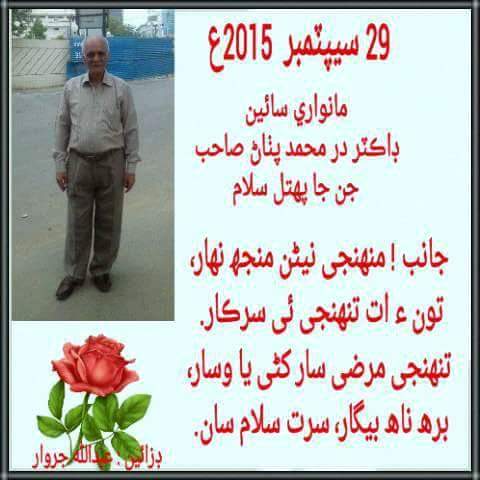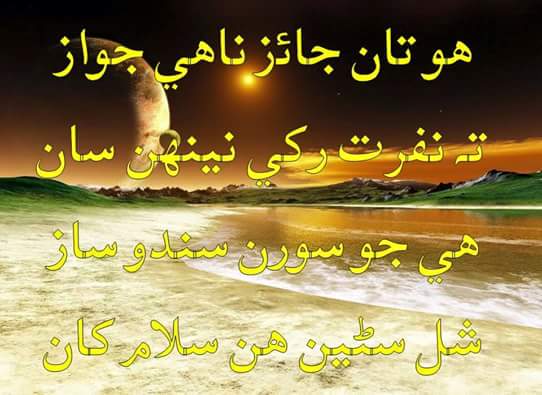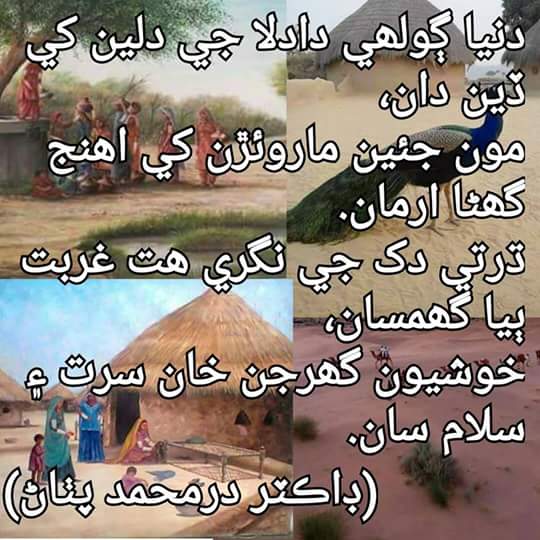
Germany and Japan, the looser of WW2, have a list of apology statements to be issued every year during anniversary day. A hundred years after the Jallianwala Bagh incident, the Brits expressed their deep regret and not an absolute apology. This regret from the British PM Theresa May is the first one from the victors side. Remember Britain has never even regretted for millions of Indian sepoys killed as cannon fodders in both world wars, millions died in famines, plunder of natural resources etc. The dark skinned Asians were considered by the racists as White man's burden. Our soldiers were counted among the donkeys and mules in both world wars.
During the Colonial Raj, there were many apologists and rationalization workers justifying each and every act of the empire. The empire loyalists even supported the brutality of Jallianwala Bagh. Governor O’Dwyer was also given a fund of Rs 1.75 lakh collected by Punjabi elite like Kunj Bihari Thapar, Umar Hayat Khan, Chaudhary Gajjan Singh and Rai Bahadur Lal Chand. There were hardly any princes who condemned the massacre. The Maharaja of Patiala actually supported it.
The Justice Party in Madras Presidency (fore runners of Dravida Kazhagam) had supported the Rowlatt act and even defended the British on Jallianwala Bagh massacre. The Dravida Kazhagam leader, Periyar EV Ramssamy Naicker, wished for British to stay to fight against upper castes and even called on observing August 15 as black day. Until 1947, the Dravidean movement functioned as handmaiden of colonial Raj. Just prior to the transfer of power, Periyar even pleaded for the continuance of British rule in TN. But because of the political ambitions, leaders like Annadurai and Karunanidhi parted ways and formed DMK in 1949. Also please refer the book "The Life and Times of C.N. Annadurai" by R. Kannan.
It is a fact that the official priests of the Golden Temple endorsed Colonel Dyer and honored him with a Saropa (robe of honor). This caused an outrage and led the formation of the SGPC (Shiromani Gurudwara Prabandhak Committee) on 15 November 1920 to manage and to implement reforms in Sikh shrines.
Even though General Dyer was forced to resign, he was welcomed as a hero in England. The House of Lords voted 129 to 86 in favor of Dyer. Many conservatives like Lord Salisbury supported him. The Morning Post launched an appeal to patriots for monetary subscriptions for helping Dyer, the man who saved India. The response was massive : 26,000 pounds (a huge amount at that time) were donated so that the butcher of Jallianwala Bagh could spend the rest of his life in comfort. The Nobel Laureate Rudyard Kipling heaped praise upon him and gave ten pounds. Worse still, some Indian elites collected money for General Dyer as he was forced to retire from service for his brutal act.
Even the composition of the special force involved in the massacre had no British soldiers. The Indian sepoys belonging to Gurkhas and Baluchees had fired the shots on orders from Dyer.
General situation at that time
--------------------------------------
Undivided Punjab had contributed a large number of soldiers for WW1. Gandhi recruited 13 lakh ( 1.3 million ) Indian soldiers in the first World War. During war time, there were a series of repressive emergency acts that were intended to combat subversive activities. Many expected that these measures will be removed after the war and more political autonomy will be granted for Indians. The Montagu-Chelmsford Report recommended limited local self-government.
After winning the war, the British instead enacted the draconian Rowlatt Act, which essentially extended the wartime repressive measures. The demobilised soldiers from various fronts in Europe returned home without jobs. The food shortages and skyrocketing prices complicated the matters. The trial of Ghadrites (members of Ghadar movement) had created considerable unrest particularly among the Sikhs. For the soldiers who fought for Britain, and without whom there would have been no victory on the Western front, this was an unforgivable act of betrayal.
Events before the massacre
-------------------------------------
The joint fight of Hindus and Muslims is one thing that the British feared the worst. On 9 April 1919, whole city celebrated Ram Navmi with a procession led by Dr Hafiz Mohd Bashir. It was for the first time that it was fronted by a Muslim. Deputy Commissioner Miles Irving sent a telegram to then Punjab Governor Gen Michael O’ Dwyer, saying "they have united" like in 1857 revolt. The ordinary Muslim and Hindu masses of North India were the prime movers and basic engine of the freedom struggle in 1857.
The next day, police arrested DrSatyapal and DrKitchlew on April 10 morning, and packed them off to Dharamshala in Himachal. This led to a general strike in Amritsar. Excited groups of citizens soon merged together into a crowd of about 50,000 marching on to protest to the deputy commissioner against the deportation of the two leaders. Around a dozen people killed in police firing. As those killed were being carried back through the streets, an angry mob of people went on the rampage. Government offices and banks were attacked and damaged, and five Europeans were beaten to death.
The crowd also attacked Miss Marcella Sherwood, an English missionary. This was an apparent trigger for the fanatic Irish governor Michael O’Dwyer to bring in Brigadier-General Reginald Dyer from Jalandhar, to restore order.
The secret Inquisition
-----------------------------
What followed was a medieval times religious inquisition that used to exist only in Europe until 18th century. The infamous Irish jail superintendent in Andamans, David Barry, was also experimenting the same inquisition with the hapless prisoners in Cellular jail.
On 12 April he issued an order prohibiting all meetings and gatherings. On 13 April which marked the Baisakhi festival, a large number of people, mostly Sikhs, had poured into the city from the surrounding villages for a meeting at 4.30 in the evening. Gen Dyer set out for the venue of the meeting with 50 riflemen and two armored cars with machine guns mounted on them. The army had sealed off all escape routes before gunning down people. There was no warning. They used up every single bullet they had even as the crowd had begun to disperse as soon as the firing began. Dyer directed them to aim and fire for maximum damage. Later, he said he would have used the machine guns had the two armoured cars been able to enter the garden.
Dyer had tasted blood and realised that the more he humiliated the Indians, the more his stock rose with the British and there was no one to stop him.
The shooting was followed by the proclamation of martial law in the Punjab that included public floggings and other humiliations. The martial law orders were meant to reinforce the low status of the natives. There was clampdown on all news going out of Punjab.
General Dyer erected a flogging booth in the middle of the lane where Mrs Sherwood fell, manned by British troops to punish locals. Teenagers were given thirty whiplashes. There was no escape. They were fastened to the flogging post. Their families were asked to watch the flogging. One boy shrieked with pain: "Oh mother, I am dead. Oh sahib, leave me".
After visiting the missionary Sherwood, Colonel Dyer issued an order requiring every Indian man using that narrow Kucha Kaurianwala Street leading to the Bagh, to crawl its length on his hands and knees. Colonel Dyer later explained : "Some Indians crawl face downwards in front of their gods. I wanted them to know that a British woman is as sacred as a Hindu god and therefore they have to crawl in front of her too".
Similar punishments were meted out randomly in Lahore. The main bazaar and the villages surrounding the town of Gujranwala was subjected to aerial bombardment from the RAF.
The number of people who were stripped, jailed, whipped, made to crawl, starved, etc. grew disproportionately larger. For six weeks or more, as long as martial law was imposed, the people of Punjab became slaves who had to accept every whim of their masters. Martial Law was imposed on April 16 and was in force in Amritsar up to June 9.
Miss Marcella Sherwood later defended Colonel Dyer, describing him as the saviour of the Punjab.
Very slowly the news of the massacre began to leak out. MK Gandhi initially was hesitant to act, but he soon began organizing his first large-scale and sustained nonviolent (satyagraha) and non-cooperation movement. The Khilafat movement turned violent with Malabar revolt in 1921. After the chauri chaura incident, Gandhi called off all protests. Even at Amritsar, in Dec 1919 after all the tragic events of the year, a resolution of loyalty to the emperor and of satisfaction on successful termination of War was passed. Admittedly, Gandhi was at the helm of affairs of Congress, at the time.
Impact on freedom movement
------------------------------------------
The immediate result was that even those who were not much concerned also joined freedom struggle. The brutalities had only made the people’s determination stronger. The prisoners of the Andaman cellular jail also got some relief. The jail superintendent, David Barry, was asked to give up his inquisition. The savarkar brothers were shifted to prisons in the mainland.
The incident gave a huge impetus to the freedom movement. The incident exposed the idea of a benevolent British rule as a myth. The only comparison is the Marichjhapi massacre of 1978-79 in West Bengal by the then communist government of Aam Admi.
On the day of massacre a 20-year old orphan boy named Udham Singh was serving water to the people. He escaped death but the incident affected him deeply. Over the next 21 years, Lt Governor Dwyer retired and returned to Britain. In the meantime Udham Singh also grew up and managed to reach England. The savage governor O’Dwyer was later assassinated by Udham Singh in 1940. He did not attempt to flee. During the trail Udham Singh said he was proud of assassination, was convicted, and hanged to death.
Such an inept handling of protesting mob was again seen during the Sabarimala festival season this year. The Kerala communist government dealt with the protesters by imposing the section 144 of IPC. The lackeys of the communist government in IAS,IPS behaved like the same monsters of the colonial Raj. The situation never went out of control due to the sensible handling by some police officers. Remember that CrPC 144 is used to disperse crowd even with firing squad. Sabarimala is the place that attracts huge crowd in batches.



